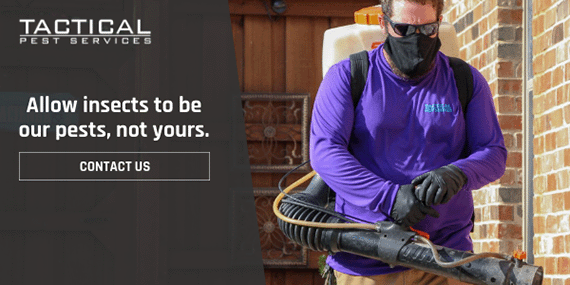Summer is upon us, and with it comes the increased presence of stinging insects around our homes. Have you spotted a nest near your home recently? This season, wasps, hornets, and mud daubers are more active, posing a potential threat to your home and family. If you’re concerned about these insects and want to ensure your home’s safety, read on to learn how to identify them and pest services that can effectively prevent their presence.
If you own a home and live in Texas, you’ve most likely dealt with stinging and threatening insects. Texas is home to many flying insects, so it can be hard to identify which ones are threatening and which you need to look out for.
Paper Wasp
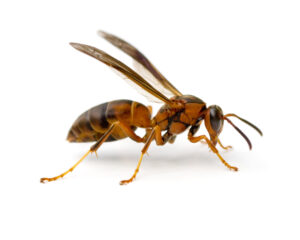
Paper wasps are the most common harmful insects in North Texas. These wasps have a brown body with long legs, a thin waist, and no hair. They have black wings, and some species can have red markings. They grow between ¾ – 1 inch long. A single paper wasp can live between 12 and 22 days. Paper wasps create their nests with wood fibers collected from plants. They have either a gray or brown color and have hexagonal cells. These wasps are known to be aggressive and dangerous and have a sting more painful than a bee’s. These insects like to build their nests in a yard. You can also find them on tree limbs and shrubs, under window sills, and door frames.
Yellow Jacket
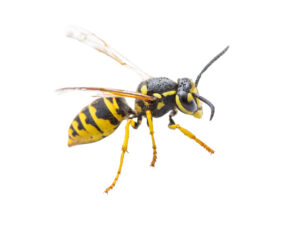
The next most common stinging insect is the yellow jacket wasp. These wasps have a yellow and black body with a thin waist, wings the length of their body, and don’t grow hair. A standard yellow jacket size is ½ inch long, while the queen can grow to ¾ an inch. A single yellow jacket lives around 22 days, while the colony can live up to a year. The sting from a yellow jacket causes severe pain and lasts 1-2 hours, while swelling can remain for up to 48 hours. Their nests have a paper-like substance and can house up to 1,000 tenants at once, so you want to take care of these insects as soon as you spot them. These insects prefer to build their nests underground near the base of a tree, cracks in a sidewalk, or under a staircase.
Bald Faced Hornet
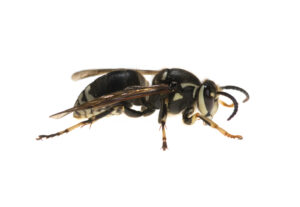
The bald-faced hornet is the only hornet native to Texas. These insects are primarily black with white markings and have translucent wings, thick bodies, and hair on their faces. They can grow up to 20mm, and the life expectancy of their colony is about one year. Their nests look like teardrops and are made of wood pulp with a paper-like appearance. These insects prefer to live in a shady, sheltered location 6 feet above ground in a tree or attic.
Mud Dauber
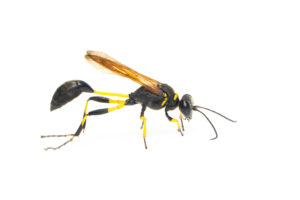
There are two species of mud daubers in Texas: the black and yellow mud dauber and the metallic black and blue mud dauber. Both are predators but function in different ways. Their wings are either dark or translucent, and they can grow between ¾ and 1 inch. Mud daubers get their name from the mud they make their nests from. Their nests are cylinder-shaped and only house one per nest. These insects are solitary and don’t live together.
Pest Services
If you’re in need of a reliable pest service to handle harmful insects like wasps, hornets, and mud daubers, the Traditional Pest Service is your best bet. This comprehensive treatment, which includes four services per year, is backed by our expertise and uses modern-derived pesticides. We effectively remove webs, wasps, nests, and mud daubers from doors, windows, and eaves. Our service also involves power spraying the exterior perimeter of your home (10-foot ban) and any specialty areas we identify during the inspection. Alternatively, we offer the Natural Alternative Pest Service, a six-service plan that uses naturally derived pesticides and delivers results comparable to the traditional plan.

